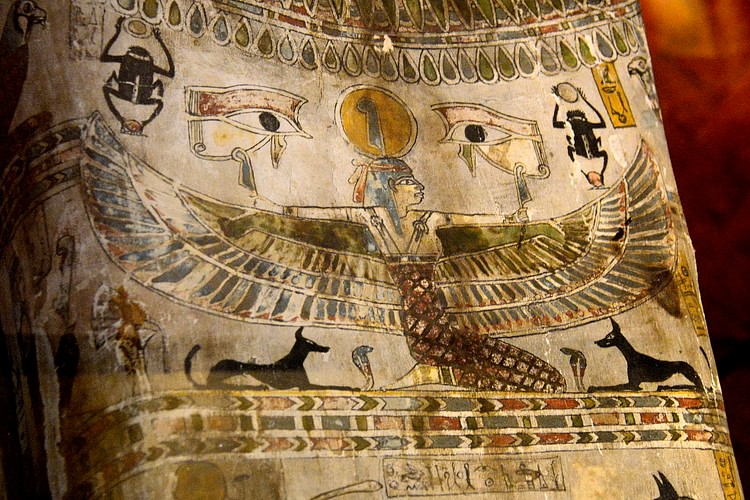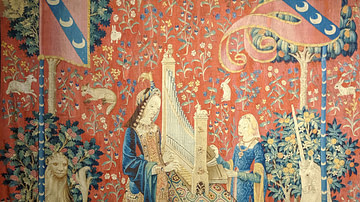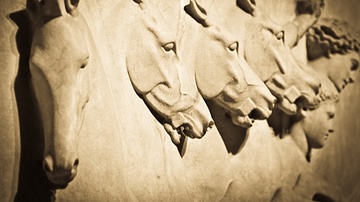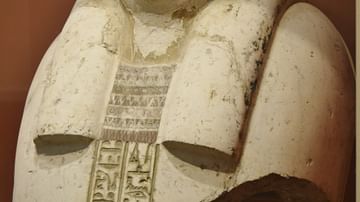Illustration
The surfaces of the coffin of Diefiawet were covered with painted scenes and hieroglyphic texts to assist and protect her passage into the afterlife. Isis and Nephthys, the sisters of Osiris, protect the head and the foot of the mummy, and goddess Nut spreads her winged arms over the breasts. A series of gods arranged along the sides of the case provide additional divine protection. The inscription in the center of the lid begins with the parentage of Diefiawet, who was the daughter of a temple doorkeeper. They continue with the full text of Chapter 89 of the Book of the Dead, a magical spell to ensure that the Ba (spirit) should be united with the body after death. From Egypt; precise provenance of excavation is unknown. The coffin dates back to the 26th Dynasty, 664-525 BCE, while the mummy dates back to the Ptolemaic period, 305-30 BCE. (National Museum of Ireland-Archaeology, Dublin, Republic of Ireland)
Cite This Work
APA Style
Amin, O. S. M. (2015, December 19). Lady Diefiawet Sarcophagus. World History Encyclopedia. Retrieved from https://www.worldhistory.org/image/4313/lady-diefiawet-sarcophagus/
Chicago Style
Amin, Osama Shukir Muhammed. "Lady Diefiawet Sarcophagus." World History Encyclopedia. Last modified December 19, 2015. https://www.worldhistory.org/image/4313/lady-diefiawet-sarcophagus/.
MLA Style
Amin, Osama Shukir Muhammed. "Lady Diefiawet Sarcophagus." World History Encyclopedia. World History Encyclopedia, 19 Dec 2015. Web. 25 Apr 2024.







